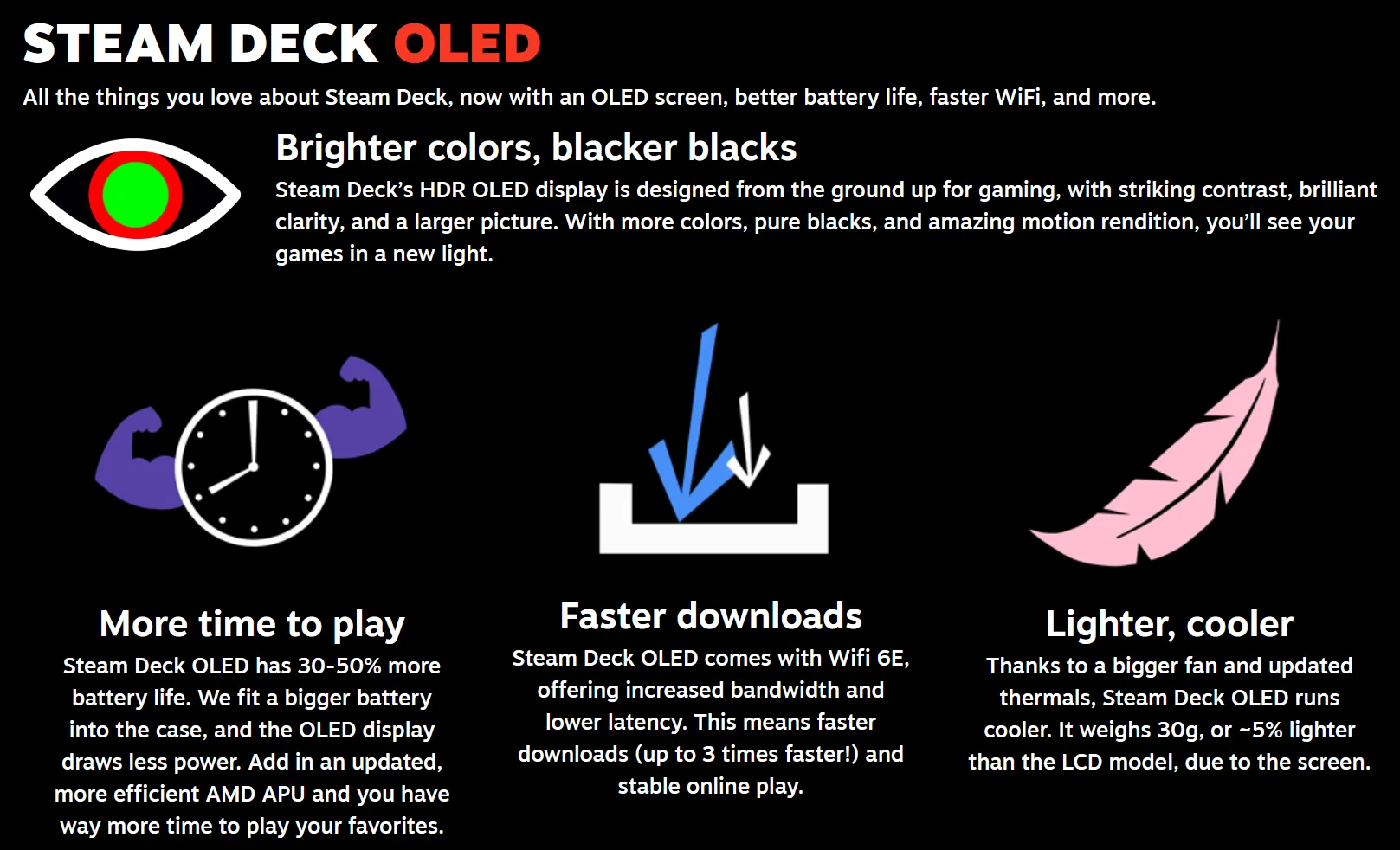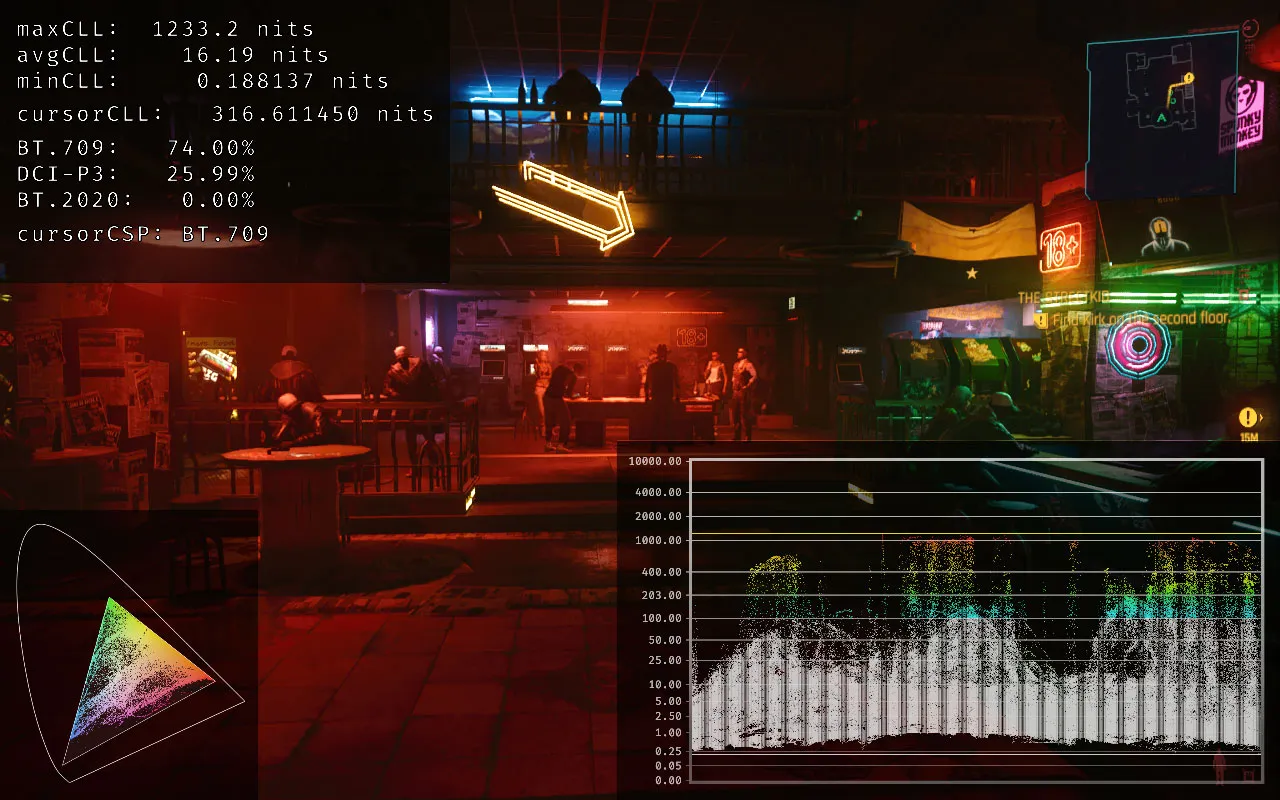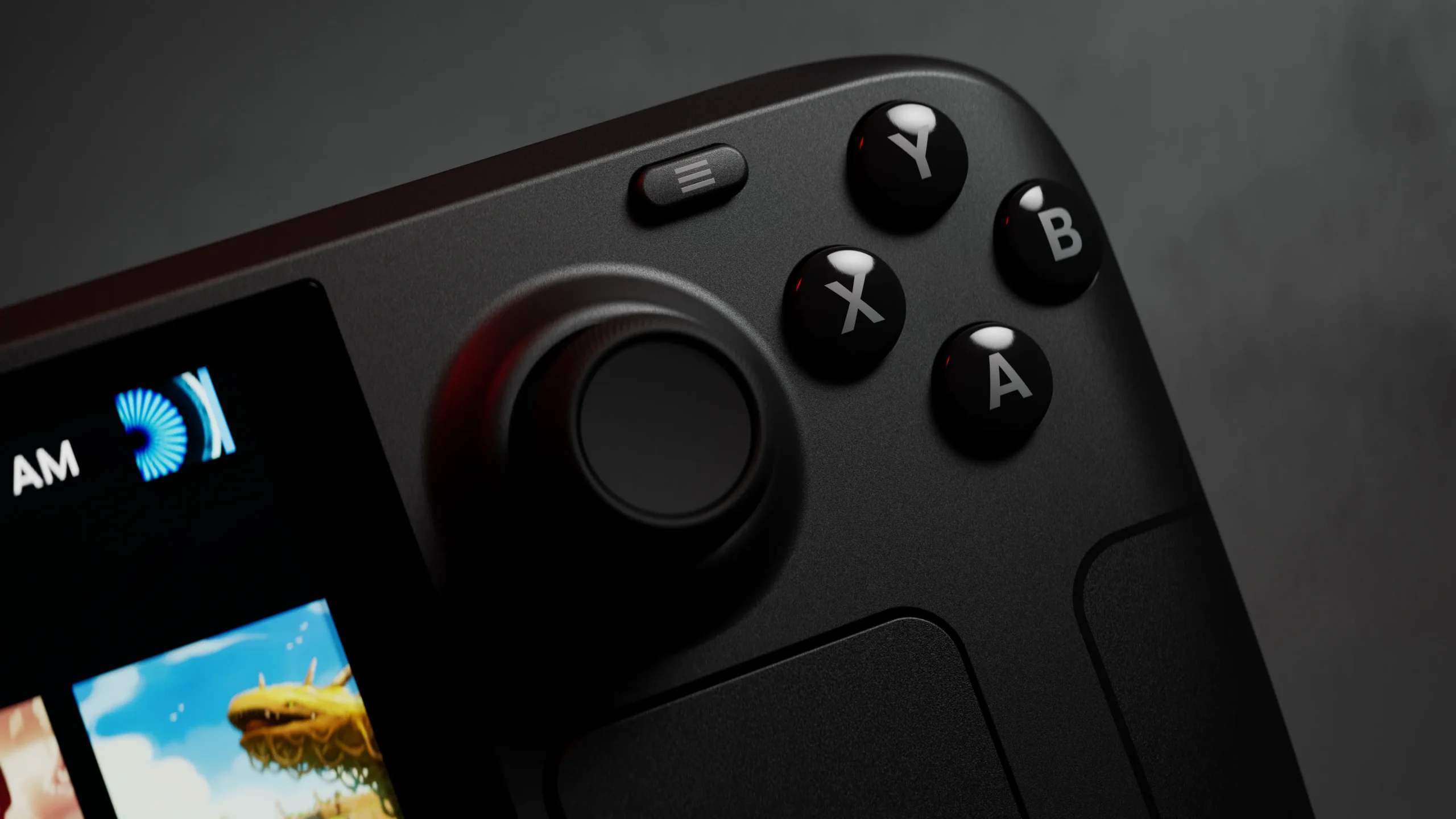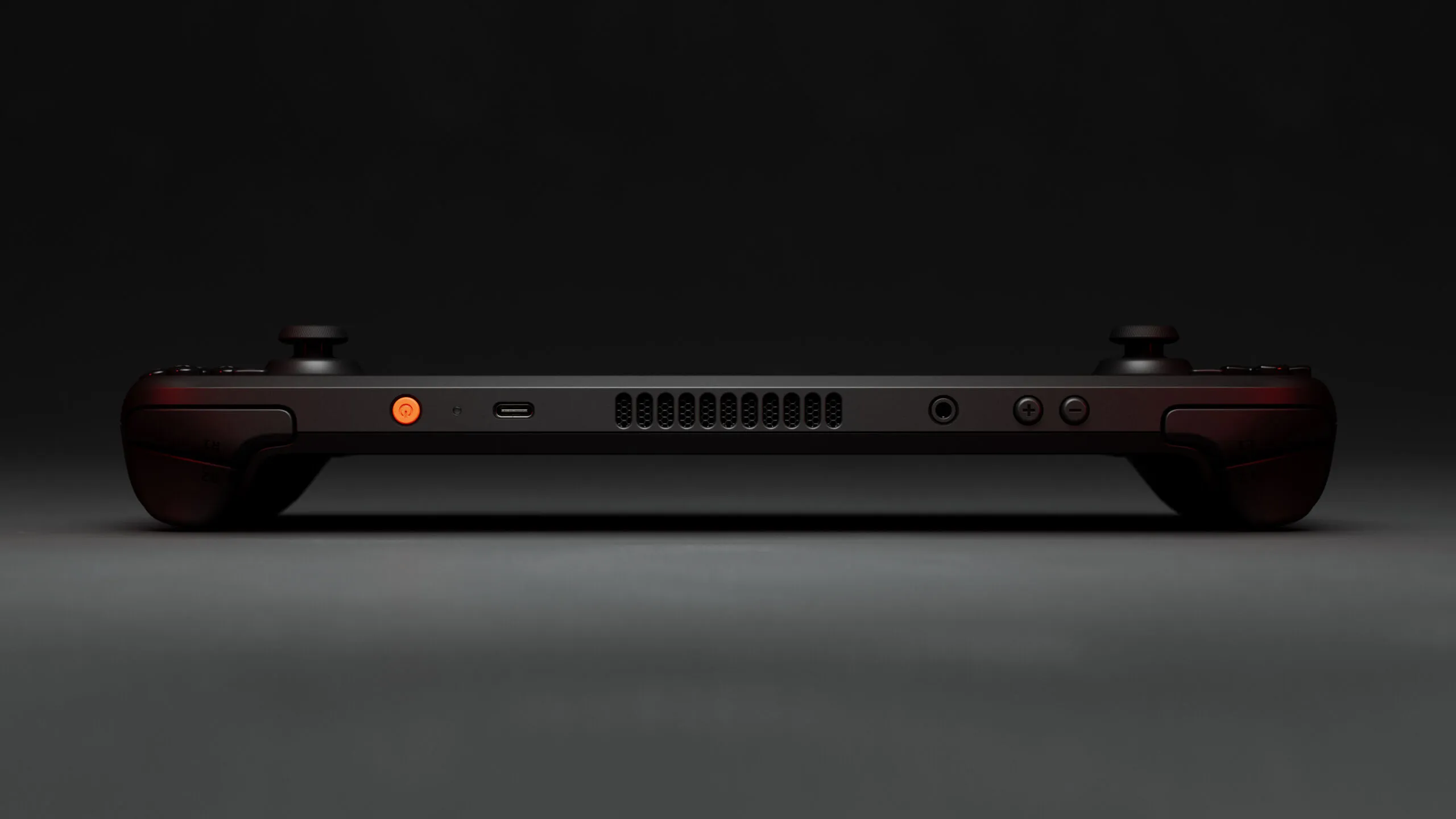Valve said less than two months ago they did not plan to update their handheld PC gaming system, the Steam Deck, in any way that gives one Deck a performance advantage over another, both for developers and customers. Valve is keeping their word. Despite the appearance of a new Steam Deck model on the way last month, today’s announcement of a “Limited Edition”Steam Deck OLED is very much an incremental update, despite the absolute wealth of little improvements it offers.
The new OLED Steam Decks will be available next week, 10 a.m. Pacific (1 p.m. Eastern) on Nov. 16. A 512GB version at $549 replaces its LCD predecessor with the same storage, and a $649 1TB “Limited Edition”version, with anti-glare etched glass and a distinct smoky red colorway, is available, though “Quantities are highly limited”of the latter. A $399 LCD Steam Deck sticks around, while the 64 and 512GB versions of the LCD model are a bit cheaper while supplies last.
There’s a heck of a lot that’s improved in the OLED Steam Deck, minus one core thing: the core powers of its chips. Sharp eyes will catch on the spec sheet that the LCD Deck has a 7nm AMD APU package, with the CPU running 2.4-3.5GHz, and the GPU 1.0-1.6GHz. The OLED Deck sports a 6nm APU, but removes the GPU range, instead implying a consistent 1.6GHz output. Memory bandwidth has also been boosted from 55000 to 6400 MT/s, a 15% jump. It’s more sustained peak performance, and a bit more RAM for frame-rate boosting, but with compatibility maintained.
There’s a lot more straightforward gains in the OLED screen for which this device is named. It’s a 7.4-inch, HDR, OLED screen, with 1,000 nits of peak brightness in HDR, or 600 nits in standard dynamic range, with a 1,000,000:1 contrast ration and “<0.1 ms”response time. There’s even a touted boost to its “high performance touch,”with touchscreen polling now at 180Hz, providing “improved latency and accuracy.”Dual ambient lights sensors on the OLED model should also provide more accurate auto-brightness.

Strangely, Valve doesn’t tout one of the other notable features of the new Steam Deck’s screen: its 90 HZ maximum refresh rate. Other PC-based portables, including the ROG Ally and upcoming Lenovo Legion GO, differentiate themselves from the Deck with 120 and 144 Hz refresh rates, respectively. But the Ally paid for its double-time screen with disappointing battery life. Given that many Steam Deck enthusiasts end up playing demanding games at 40 or 45 frames per second to save on battery life, and AAA games starting to slip past the Deck’s capabilities.
Despite this bigger, brighter, and higher-refresh screen, the OLED model touts 30–50 percent more battery life with a 50 Watt-hour battery, versus the original 40 Whr. Despite the battery bump, the unit also weighs 30g less than the original, down to 640 grams. This stems from the die shrink, some screen power efficiencies, and improved battery chemistry. Notably, Valve says charging from 20-80% on the OLED deck should take only 45 minutes.



Wi-Fi 6E is the other big push Valve is making on their sales page, and while it might offer “3x faster downloads,”that’s one of those highly dependent figures, given the vagaries of home Wi-Fi, server speeds, and other inputs. Rounding out the list of things you may or may not notice, as a new or upgrading Deck buyer: improved bass response from the speakers, improved trackpad haptics feel, and a power cord that is 1 meter longer.
Valve’s big, generational sequel to the Steam Deck is still going to be two, possibly three years away. Having put in the work on compatibility, verification, and the completely unexpected feat of making a Linux-based device feel very mainstream, the company is not about to start making people have to make hard choices on which version to buy. If you don’t have a Deck yet, and you think you’re in the market for it, there’s not much reason not to grab the OLED version; it’s seemingly better in every little way, minus the big frame-pushing way. That’s on the way, but you’ve got a few years to get up close with this shinier little PC.
This post was updated to add more details about the spec upgrades, the Deck catalog, and price and availability.


